When we hear about air pollution the first thing that comes to mind is usually outdoor air pollution in the form of fine dust particles.
However, for many of us, the bigger danger is actually indoor air pollution – something that many people don’t even consider.
Indoor air pollution is often far more concentration that that which is outside. ‘Americans, on average, spend approximately 90 percent of their time indoors, where the concentrations of some pollutants are often 2 to 5 times higher than typical outdoor concentrations‘ (EPA).
In fact, indoor air pollution is one of the leading causes of death today. Causing over 1.6 million deaths per year, it’s a subject that we need to pay attention to.

Deaths caused by indoor air pollution & air pollution. Our World in Data
Although the death rate from indoor air pollution is gradually dropping, it’s not something that we can forget about (Our World in Data).
Not only can bad indoor air quality lead to death, but it can also lead to many other health conditions including damage to the liver, kidneys, and the central nervous system, and cancer. (NIH)
For this reason, it’s something that has to be considered and accounted for. In this guide, we will look at the causes, effects, and ways to minimise indoor air pollution.
Wondering about how indoor air pollution impacts us? I recently covered the impacts of air pollution on studying & academic performance.
This post contains affiliate links. For more information, please refer to my affiliate disclaimer.
Information on this blog is for informational purposes only. Readers are encouraged to confirm the information herein with other sources. Furthermore, this information is not intended to replace medical advice from professionals. This website assumes no responsibility for the accuracy of the information, which is subject to change without notice.
Where Does Indoor Air Pollution Come From?
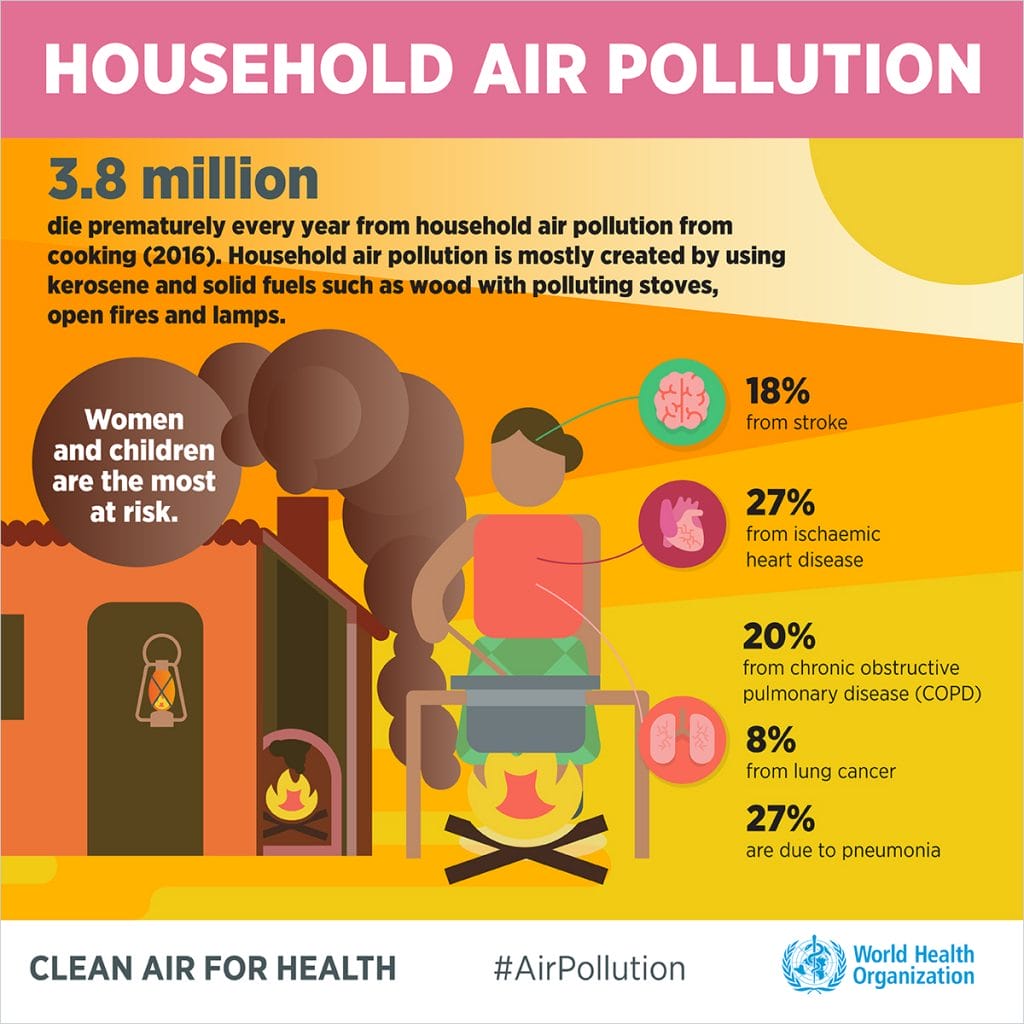
Where outdoor air pollution is generally focused on fine dust particles such as PM2.5 and PM10, indoor air pollution is made up of VOCs.
Volatile organic compounds are many different pollutants that can come from many different sources.
Some of the most famous and well known VOCs are radon, formaldehyde, carbon dioxide and carbon monoxide, and more.
What Are VOCs?
When researching air pollution and fine particles, you will find that the term VOC comes up very often – especially if the topic is indoor air pollution.
VOC stands for volatile organic compounds, compounds that easily become vapors or gases (NIH).
In a bit more detail, ‘Volatile organic compounds, or VOCs are organic chemical compounds whose composition makes it possible for them to evaporate under normal indoor atmospheric conditions of temperature and pressure‘ (EPA).
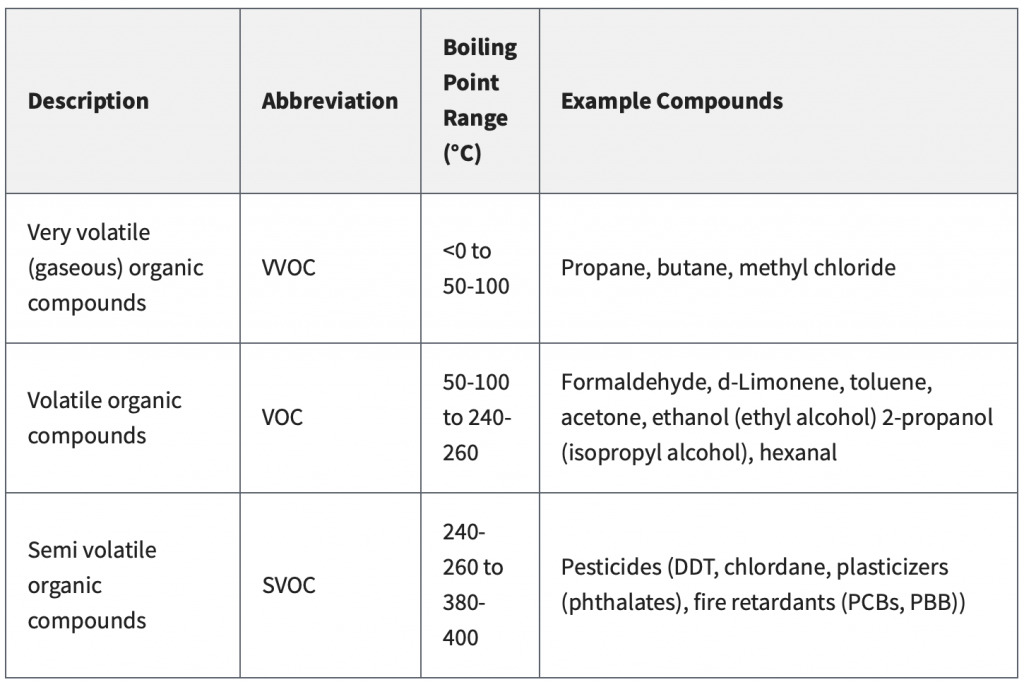
VOCs, Environmental Protection Agency.
These VOCs can be found in many common household materials. They are often found coming from materials such as plywood, glues, drapes, and more (Health Link BC).
Further, these compounds can also be emitted from many household products. Especially those that are related to cleaning or to beauty, such as hairspray, nail polish, etc (Health Link BC).
On top of these sources, VOCs can also come from many more sources:
- paints, paint strippers and other solvents
- wood preservatives
- aerosol sprays
- cleansers and disinfectants
- moth repellents and air fresheners
- stored fuels and automotive products
- hobby supplies
- dry-cleaned clothing
- pesticide (EPA)
All of these products can emit different VOCs that are harmful for our health, both over the short term and the long term. Some of the most commonly emitted chemicals are benzene, ethylene glycol, formaldehyde, methylene chloride, tetrachloroethylene, toluene, xylene, and 1,3-butadiene (Minnesota Department of Health).
Volatile Organic Compounds can be hard to detect as many of them are odourless. Whether they smell or not doesn’t represent the danger they impose – both strong smelling and odourless VOCs can be dangerous.
The biggest difficulty with VOCs is that due to their (often) odourless nature, they are often undetectable. There are VOC monitors which can be purchased, however, and these can monitor your indoor air quality and warn you when it becomes dangerous.
Read more: monitor the VOCs that you are breathing with the Flow 2.
Health Effects of VOCS

Wood burning fireplaces are a potential source of indoor air contaminants (Pubmed).
There are many different health effects that are the result of exposure to indoor air pollution in the form of VOCs. Further, we don’t fully understand all of the implications that VOCs can have on the human body.
This is mainly due to the wide variety of different VOCs that can be encountered indoors. ‘The chemical diversity of the VOC group is reflected in the diversity of the health effects that individual VOCs can cause, ranging from no known health effects of relatively inert VOCs to highly toxic effects of reactive VOCs. The range of possible health effects of VOCs is quite broad, with the major effects including sensory, irritation and allergic effects, respiratory effects and carcinogenic effects’ (Reviews on Environmental Health).
While we currently don’t know all of the health effects that indoor air pollution can cause, it is known that they can be very dangerous, and that they can have a serious impact on health.
In the short term, VOCs can cause:
- Irritation of the eyes and respiratory tract
- Headaches
- Dizziness
- Visual disorders
- Memory problems
In the long term, VOCs can cause:
- Irritation of the eyes, nose, and throat
- Nausea
- Fatigue
- Loss of coordination
- Dizziness
- Damage to the liver, kidneys, and central nervous system
- Cancer (NIH)
The table below uses WHO data to show the health effects that are associated with indoor air pollution. However, there is still a lot of research that needs to be done into the topic, and as such, some of these health effects still have insufficient evidence currently.
The top half of the table are health outcomes that have sufficient evidence to be proven as associated with indoor air pollution. The bottom half is suspected, but currently has insufficient evidence to be proven.
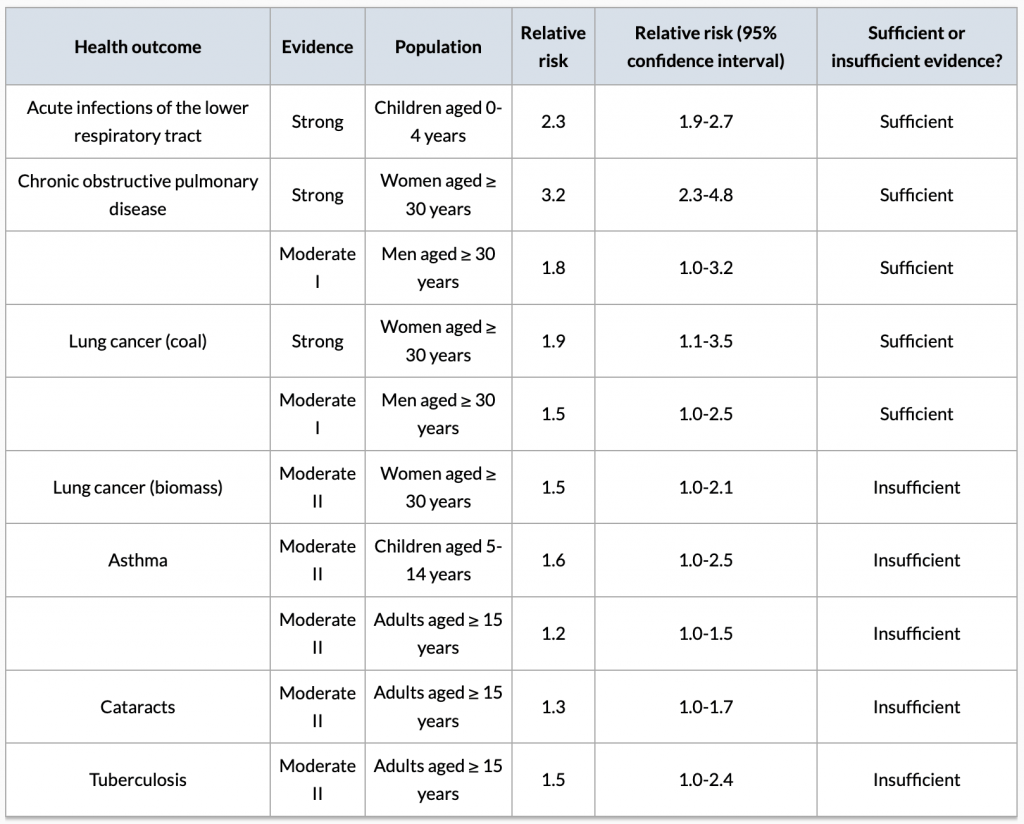
Health effects of indoor air pollution. Our World in Data, sourced from WHO.
For this reason, VOCs are something that should always be monitored as they pose a significant threat to the health of you and everyone in your house.
10 facts about air pollution that you should know!
Monitoring Indoor Air Pollution
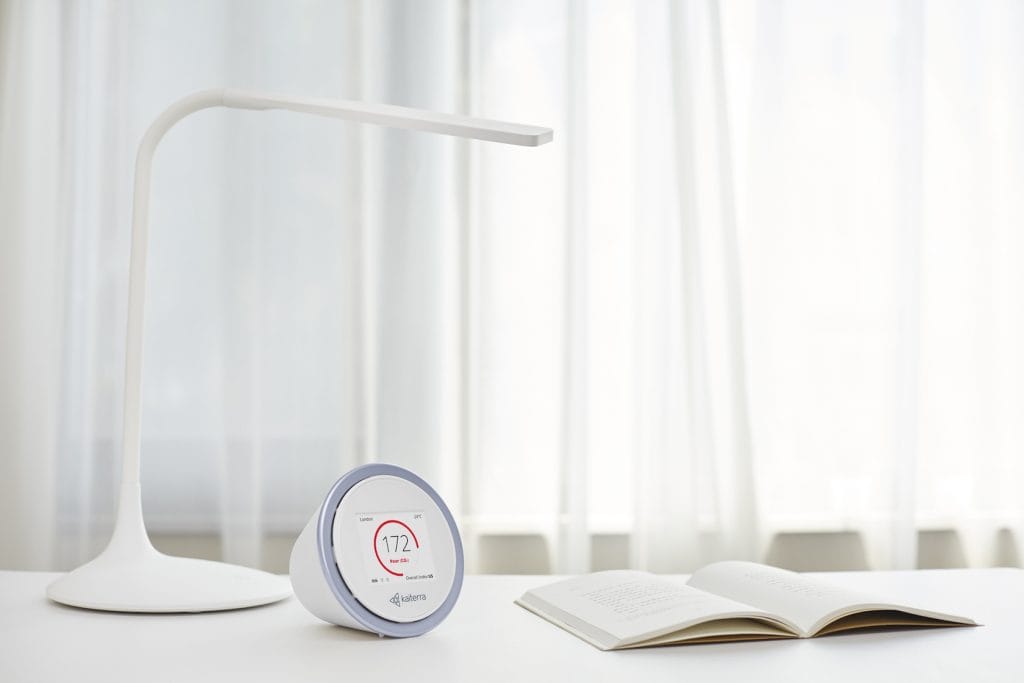
The Laser Egg indoor air pollution monitor.
Unfortunately, there really isn’t any easy way to monitor indoor air pollution without purchasing a dedicated product for the purpose. There are many air quality monitors available that fit many different price ranges.
For many people, and indoor air pollution monitor won’t be essential. These monitors won’t help clean the air, that’s the job of good ventilation and an air purifier. However, they will let you know when the air is dangerous and when steps should be taken to minimise the indoor air pollution.
If you want to purchase an air quality monitor, make sure to purchase one that measures not only particulate matter (such as PM2.5 and PM10), but one that also measures VOCs.
Some good air quality monitors that measure both particulate matter and VOCs are listed below.
Best Indoor Pollution Monitors: Kaiterra Laser Egg+ | Temtop M10 Air Quality Monitor | Awair 2nd Edition
How to Minimise Indoor Air Pollution
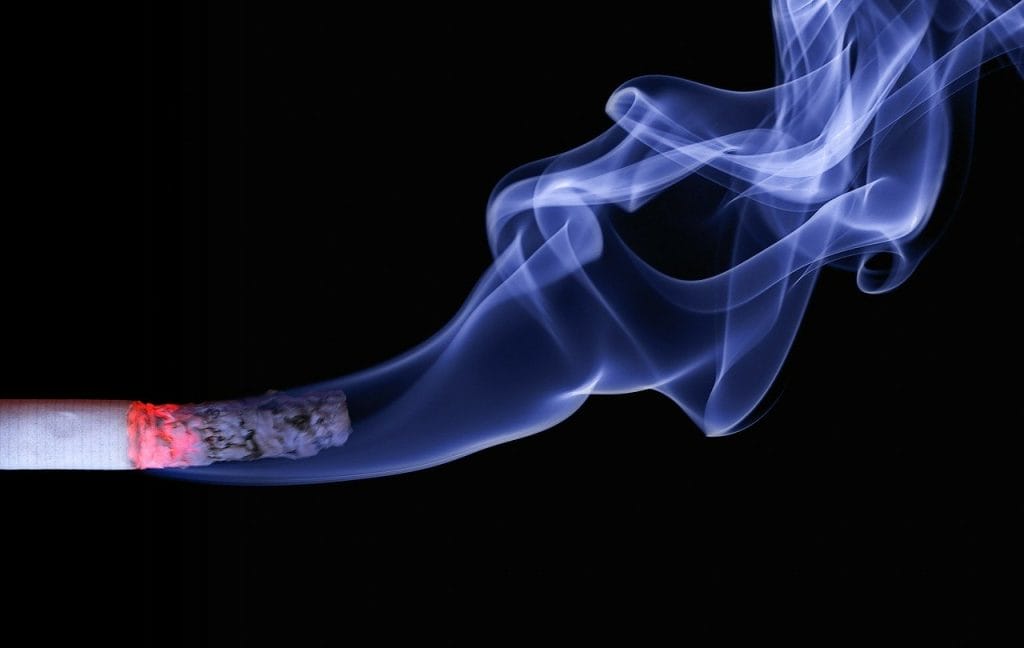
Smoking can be a large source of VOCs indoors.
Now that we have covered the dangers of VOCs and indoor air pollution, it’s time to look at what can be done to prevent the dangers.
There are a few obvious ways to decrease indoor air pollution – increasing ventilation to name one. However, there are some other steps that can also be taken to protect your home, and you, from VOCs.
When possible, try to avoid the use of products with high VOCs. There are often less toxic options available, but if there aren’t, try to be as sparing as possible.
- Firstly, look for non-chemical emitting ways to deal with the problem. For example, integrated pest management can help eliminate or greatly reduce the use of pesticides (Lung.org). If this isn’t possible, then look for products with low VOCs. Only purchase as much as you need, and use as little as possible.
- Make sure that the area is well ventilated, and if possible use a fan to push the toxic air outside through a window or door.
- Store all products that can emit VOCs outside or in an external building such as a garage.
- Finally, and most importantly, don’t smoke inside, and try to use other VOC emitting products (such as those listed above) outside when possible.
All of the methods above will help reduce exposure to VOCs. However, in some cases it is impossible to avoid exposure – for example, if your house was built with materials that emit them.
If this is the case, an air purifier that is capable of filtering these harmful gases from the atmosphere is the best option. There are lots of different choices and they are available in a variety of price ranges.
Air pollution in Seoul. Everything that you need to know!
How To Protect Yourself from Indoor Air Pollution

Opening the windows is one of the best ways to minimise indoor air pollution.
While minimisation of indoor air pollutants is very important, there are times when avoiding indoor air pollution is impossible. For example, if you need to do some interior painting or need to do some thorough cleaning with potentially harmful chemicals.
If this is the case, the best advice is always to vacate the area and ventilate it well. After the area has been ventilated for a few hours, it’s often safe to come back. However, what about the times when you can’t avoid VOCS?
If this is the case, a respirator or mask is your best choice. Respirators can limit your exposure to VOCs for the period that you must be nearby (such as while you paint).
Respirators must be fitted correctly and have a rating (such as P100, KN100, KF94, etc) to be effective. It is also important to look into which respirators protect against the chemicals that you are using.
Obviously a respirator is only a short term protective measure though. Once you have finished cleaning, painting, etc, it’s important to ventilate the area.
While ventilating is the most important step, some VOCs can stay in the air for hours, days, and months after. If this is the case, an air purifier combined with good ventilation is the best way to clear indoor air pollution.
Read more: Totobobo Mask full review.
Do Air Purifiers Work?
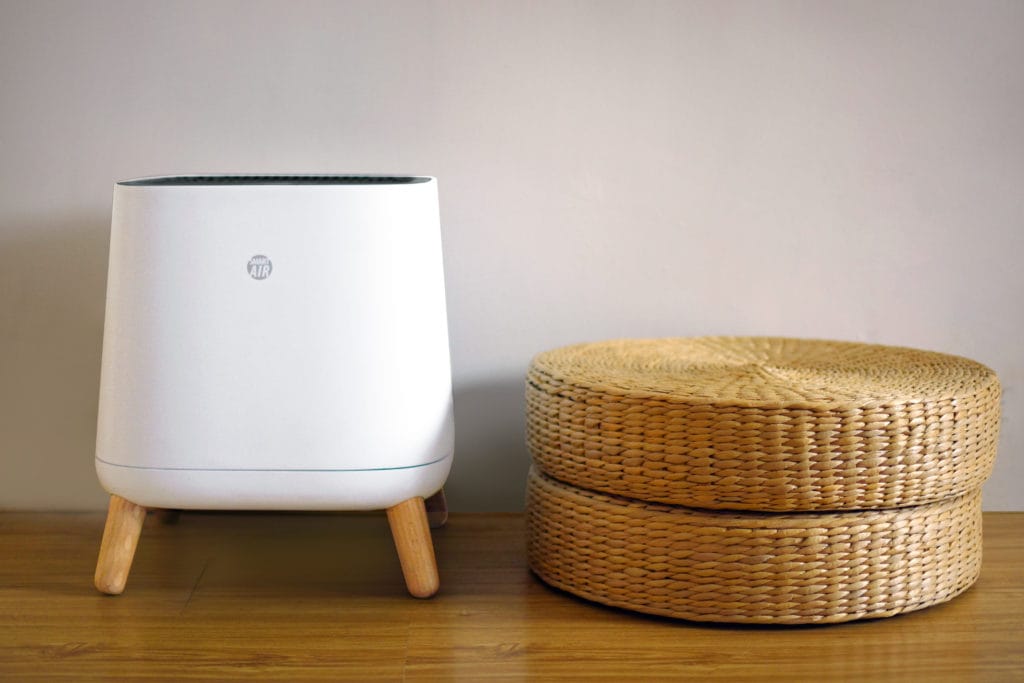
I recently reviewed the Sqair air purifier.
Some sources state that air purifiers are either ineffective or actually create worse indoor air pollution. However, scientific research seems to point to the fact that air purifiers do indeed help filter indoor air.
However, they are not a replacement for good ventilation and fresh air. Instead of a replacement for these, air purifiers should be used in conjunction with these methods.
Most portable air cleaners and furnace/HVAC filters can filter particles from the air. Some can filter the small particles of greatest health concern (PM2.5). There are also air cleaners and filters that can filter both particles and gases. The longer the air cleaner runs, the more air it filters. Note that it is always important to reduce or remove the sources of indoor air pollutants and to ventilate with clean outdoor air. Filtration does not replace the need to control pollutants and ventilate.’ (EPA)
Further studies have also proven that air purifiers are effective at filtration against some particles and that they do an effect on the air. However, again, it must be emphasised that an air purifier is not a replacement for good ventilation – it’s something that should assist ventilation.
Which Air Purifiers are Best?
When looking for an air purifier, there are two main aspects to look at. Of course, there are factors such as price and size to consider, however, those are all up to user preference.
The two factors that should be considered are filter type and area. Every air purifier has limits in regards to the volume of air that it can filter. For this reason, it is important to check the amount of air that an air purifier can filter before purchasing it. If you want to filter multiple rooms, you may need to move the purifier around or purchase more than one.
Secondly, is the filter type. When it comes to looking for an air purifier for indoor air pollution, make sure to buy one that has a HEPA filter.
A HEPA filter is standardized at a minimum 99.97% efficiency rating for removing particles greater than or equal to 0.3μm (1/83,000 of an inch) in diameter. This means that for every 10,000 particles that are 0.3μm in diameter, 3 will pass through the filter, and the rest will be trapped by the filter (NIH).
Without a HEPA filter rating, you have to rely on a companies claims about the filtration qualities of a filter – something which can be misleading.
Best Air Purifiers: Vremi Large Room Air Purifier | Levoit Air Purifier | Coway Airmega 300
Respirators for Painting and Cleaning

Paint can be a source of VOCs, and a respirator should be worn when using toxic paints.
As previously mentioned, there are times when the use of products that emit VOCs can’t be avoided. If this is the case, a using a respirator with VOC filters is the best choice.
These filters are usually available for relatively cheap prices and the filters can be replaced when needed. This means that one respirator can last indefinitely – provided that the filter is replaced when needed.
When it comes to pesticides and pain sprays, make sure to purchase a silicon half-face respirator or equivalent. These respirators are the ones with replaceable filters that have a silicon seal that covers your mouth and nose.
Conclusion

uHoo indoor air pollution monitor results.
Indoor air pollution is something that always needs to be considered. While we often hear about outdoor air pollution on the news, indoor air pollution has the potential to be even more harmful.
Since many people spend the majority of their lives in their homes, it’s important that these areas are safe and aren’t presenting unseen dangers.
If you have any further questions or comments I would be happy to hear from you. Please feel free to leave a comment on this post or you can contact me here.
FAQ
Is Indoor Air Pollution Dangerous?
Yes. In fact, indoor air pollution often poses significantly more of a threat than outdoor air pollution. Not only are we exposed to it for longer, but the concentrations are often higher and the sources are greater.
How Can I Protect Myself from Indoor Air Pollution?
The most important step to protecting yourself is to have adequate ventilation. Ventilation is the best step to avoiding indoor air pollution. If this is impossible, or doesn’t work effectively, consider adding plants or an air purifier.
What Causes Indoor Air Pollution?
Indoor air pollution comes from a variety of sources. From chemicals from paints, nail polish and cooking (burnt food), indoor air pollution can also come from sources such as mould, carbon dioxide emissions (exhaling) and more.
How Can I Monitor Indoor Air Pollution?
Indoor air pollution can be monitored using devices such as the uHoo air quality monitor, and the Kaiterra Laser Egg.
What are VOCs?
‘Volatile organic compounds, or VOCs are organic chemical compounds whose composition makes it possible for them to evaporate under normal indoor atmospheric conditions of temperature and pressure‘ (EPA).
Have Questions or Comments?
Join the discussion on the BreatheSafeAir Community Forum. Ask any questions you have about air quality or adjacent topics and get quick answers!
I do not know if you reply to individual questions or not, but here goes. I am a 86 year old man, living alone. I live in a 2100SF brick house in Santa Fe, TX. I have bad COPD and am having very bad pollution in my house. This has been going on for a few months (I think after I had my cement slab “leveled”.) I purchased four Shark air purifiers and run them continually (changing the HEPA filter after 4,000 hours as directed on the Machine). Usually twice a day every day, all 4 purifiers show about 50% red or a lot of pollution.. Running the 4 purifiers on max for a few hours clears this up. I have gotten a bad cough and now wear an N95 mask around the house. My question to you is, who should I call for help? I have read a lot of your comments and explanations, but have not found where to call for help.